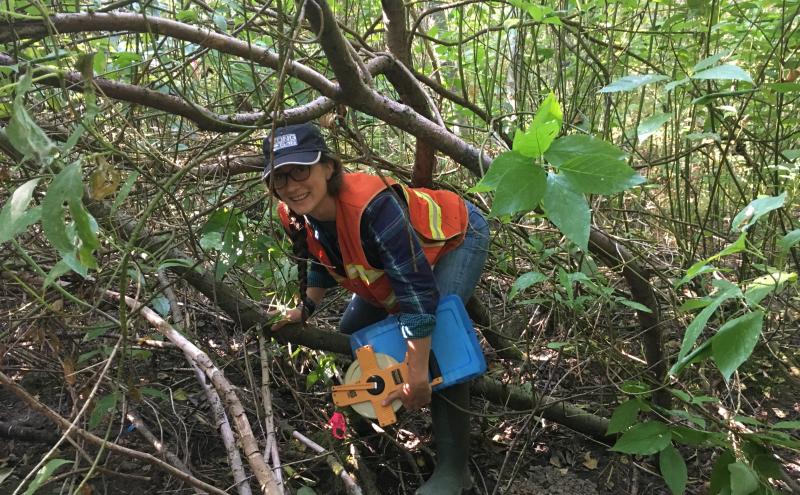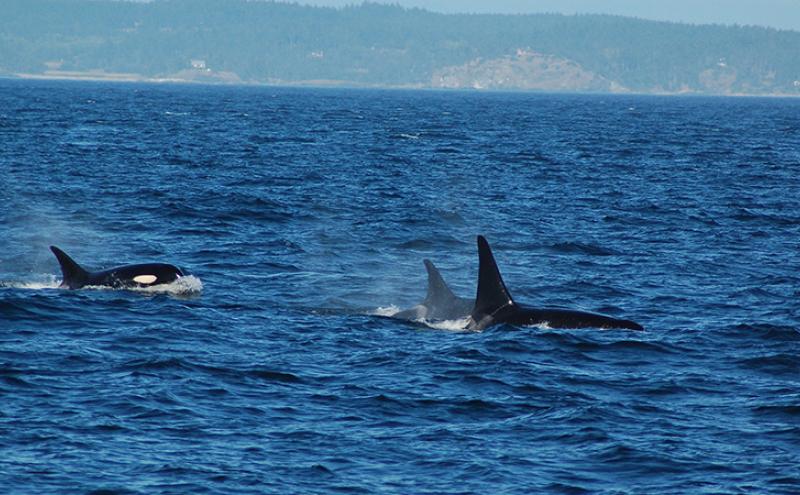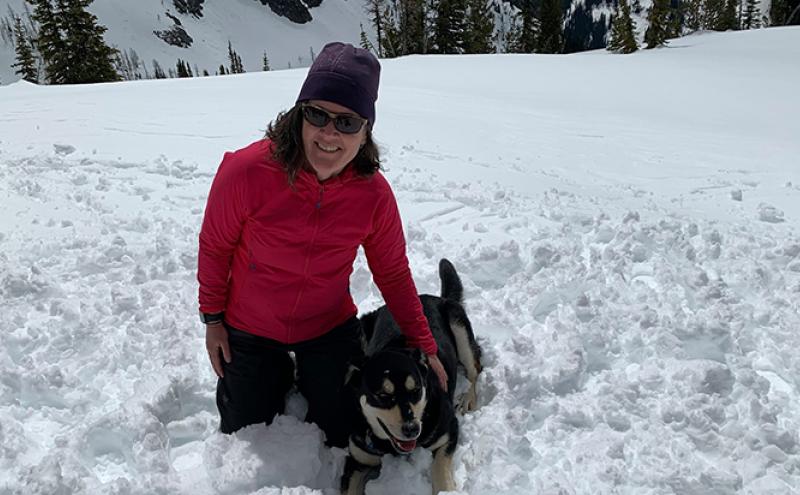
Meet Kathleen Hurley, Senior Environmental Program Manager, in the Maritime Environment and Sustainability department at the Port of Seattle. She manages fish and wildlife habitat sites and other environmental assets and works with a dedicated team supporting the blue economy through development of the Port’s first Ocean Acidification Action Plan and the Smith Cove kelp, eelgrass, and oyster enhancement project. Every day Kathleen helps the earth and its environment, creating and restoring habitats for animals and fish, protecting imperiled species such as Chinook salmon and Southern Resident orcas, and fighting climate change.
Before coming to the Port, Kathleen worked on intersecting issues of economic development, climate change, and natural resource management across the U.S. and in over a dozen countries in Africa, Latin America, and the Caribbean. She’s advised top decision-makers at the U.S. Agency for International Development (USAID), the United Nations Development Programme (UNDP), and the World Bank on climate and environmental issues. Kathleen has advanced degrees in International Environmental Policy and Development from Tufts University and Environmental Science from Western Washington University. She is passionate about connecting policy, science, and social impact to make the world a better and more equitable place. Read on to learn about a typical day for Kathleen.
Get ready for the day
At 6:30 a.m. my alarm goes off and I ease into my day. It’s a beautiful day in the Pacific Northwest, and I can’t wait to get outside. I take Rufus for a quick walk before getting my workout in and starting my workday. Rufus is a Great Pyrenees-German Shepherd mix that I adopted from a rescue group in Texas in January 2019. I alternate between meeting friends for a run or doing solo strength training exercises before I start work. Today it’s a quick loop around the neighborhood with a couple of friends to catch up on life and get those endorphins pumping. Once I’m home, I make breakfast, which is usually fruit, granola, and yogurt, and get ready for the workday. I enjoy drinking an energizing cup of green tea with my breakfast.
Kick off the workday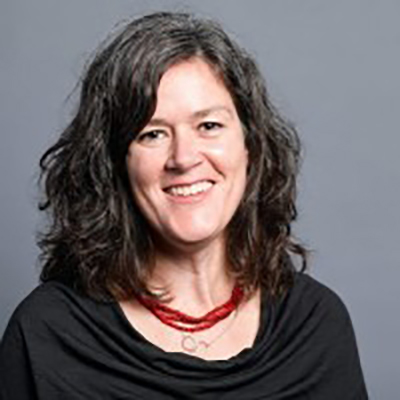
At around 8:45 a.m., I commute from my kitchen to my home office/guest bedroom. I started working at the Port in August 2020 during the pandemic, so my time with the Port has always been in a work from home capacity. While I’ve adjusted to the "home office” groove, I’m excited to work at the Pier 69 office when the pandemic is over and meet with my coworkers in person.
I review my schedule for the day, set priorities and tasks, and read and respond to emails while enjoying a La Croix sparkling water (Favorite flavor: Pamplemousse all the way).
A morning at the office
This morning consists of planning, meetings on Microsoft® Teams, and working on several projects.
Today I’m developing a conceptual design for a habitat project. This entails reviewing site plans to optimize habitat creation that’s beneficial for salmon and other organisms in the Duwamish River. I’m also reviewing the history of the site to identify important elements to include.
Occasionally I head out to inspect Port habitat sites, such as həʔapus Village Park and Shoreline Habitat (formerly Terminal 107), to assess shorelines for de-armoring projects. This inspection is part of the Port’s new Alternative Bankline Stabilization Program. Currently, 93 percent of the Port’s 15.4 miles of shoreline are hard-armored with structures like sea walls, bulkheads, and riprap. These areas present an opportunity to enhance shorelines with alternative techniques that both stabilize the shoreline and provide environmental benefits. The Port’s goal is to transition armored shorelines which are in poor or failing conditions into greener, carbon-rich habitats where appropriate. These riparian environments have been found to have a high potential for carbon sequestration and important macroinvertebrate habitat.
I also supervise and mentor two Washington Sea Grant Hershman Fellows, Elise Lasky and Dorothy Mulkern, who recently completed graduate studies with a focus on marine and coastal policy issues. The Fellowship at the Port offers firsthand experience in developing marine and natural resource policies. Elise and Dorothy and I are currently working on the Port’s new Ocean Acidification Action Plan. Dorothy also regularly inspects sites for the Alternative Bankline Stabilization Program and is developing planting guidance for the Port’s shoreline restoration work along the Duwamish. Elise has spent much of her time supporting maritime sustainability initiatives and the development of the Port’s new Equity Index.
Other daily projects include meetings with internal and external partners on projects like the Smith Cove Blue Carbon Project and the Quiet Sound Program. Another important aspect of my work is PORTfolio mitigation banking initiatives, which include supporting the Terminal 117 restoration project and developing conceptual plans for future habitat restoration at Terminal 25. (More information on some of these projects below)
Lunch
At 1:00 p.m. it’s time for some lunch and Rufus gets another walk around the neighborhood. Afterward, Rufus goes over to the neighbor’s house for playtime with their dog Poppy.
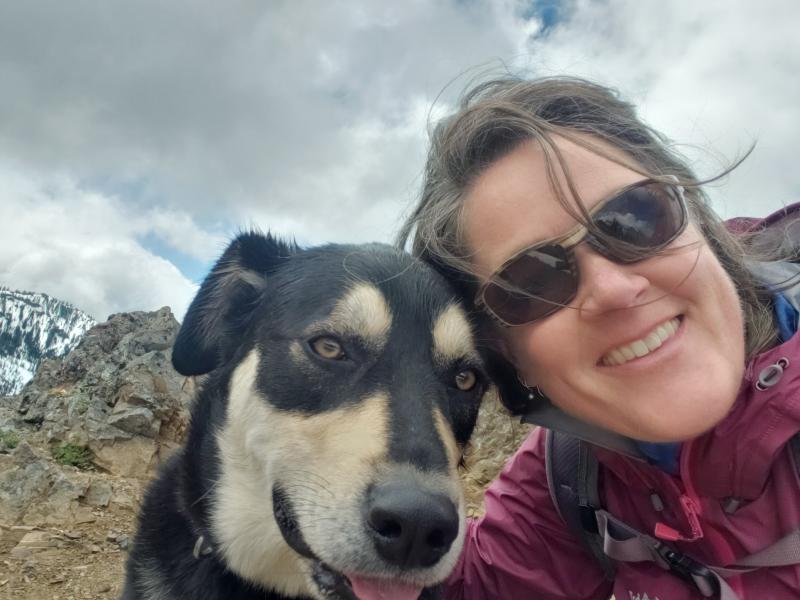
Afternoon
I have an afternoon of meetings ahead of me, but I make sure to set aside some time for focused work on specific projects. I take a break at 3:30 p.m. for a snack and spend time in my garden. I’m an avid gardener, so time outside gives me some peace of mind during a chaotic day.
Finishing the day
My workday ends at around 6:00 p.m. when Rufus begs for another walk. My passion for the outdoors and environment extends beyond my work life. When I’m not working, you can find me exploring a new hiking trail, shredding on my mountain bike, camping, or backcountry skiing. When I’m not outside, I love curling up with a good book. Current reads: The Hour of Land by Terry Tempest Williams; and American Zion: Cliven Bundy, God, and Public Lands in the West by Betsy Gaines Quammen.
The Port is a great place to work because it is a mission-driven organization with ambitious goals related to climate, habitat, and equity. I also have great colleagues! I've enjoyed putting my science "hat" back on after several years working in the policy realm; I especially enjoy our work on kelp and eelgrass enhancement!
Learn more about two projects that are near and dear to Kathleen’s heart and keep her busy.
Quiet Sound Program:
A collaborative multi-agency initiative to improve the reporting of orca sightings and help reduce underwater noise. Using an app, people can report orca information which is relayed to the pilots of large vessels, so they can slow down or move away from orcas. I work with our partners from industry, government, and other sectors to develop the initial priorities for the program.
Blue Carbon Project:
A pilot project in Smith Cove to test techniques to restore and improve critical aquatic habitat in urban bays. The Port and partners placed native oysters and aquatic plants to produce about 23 acres of “blue carbon” infrastructure that captures and holds carbon from the environment to improve the water quality. I manage the Smith Cove Blue Carbon project and we are kicking off the monitoring effort to measure the growth of eelgrass, kelp, and oysters and understand how they may contribute to carbon sequestration and the health of Elliott Bay.

